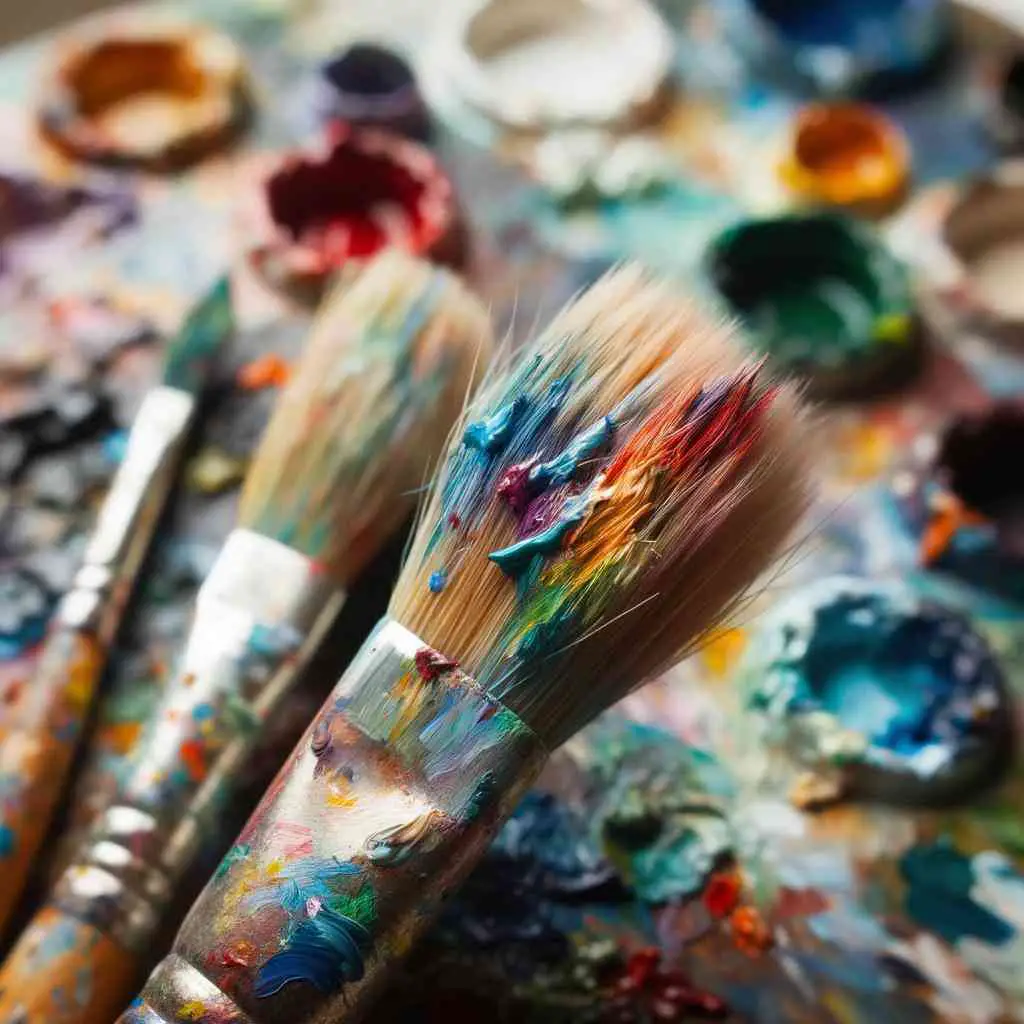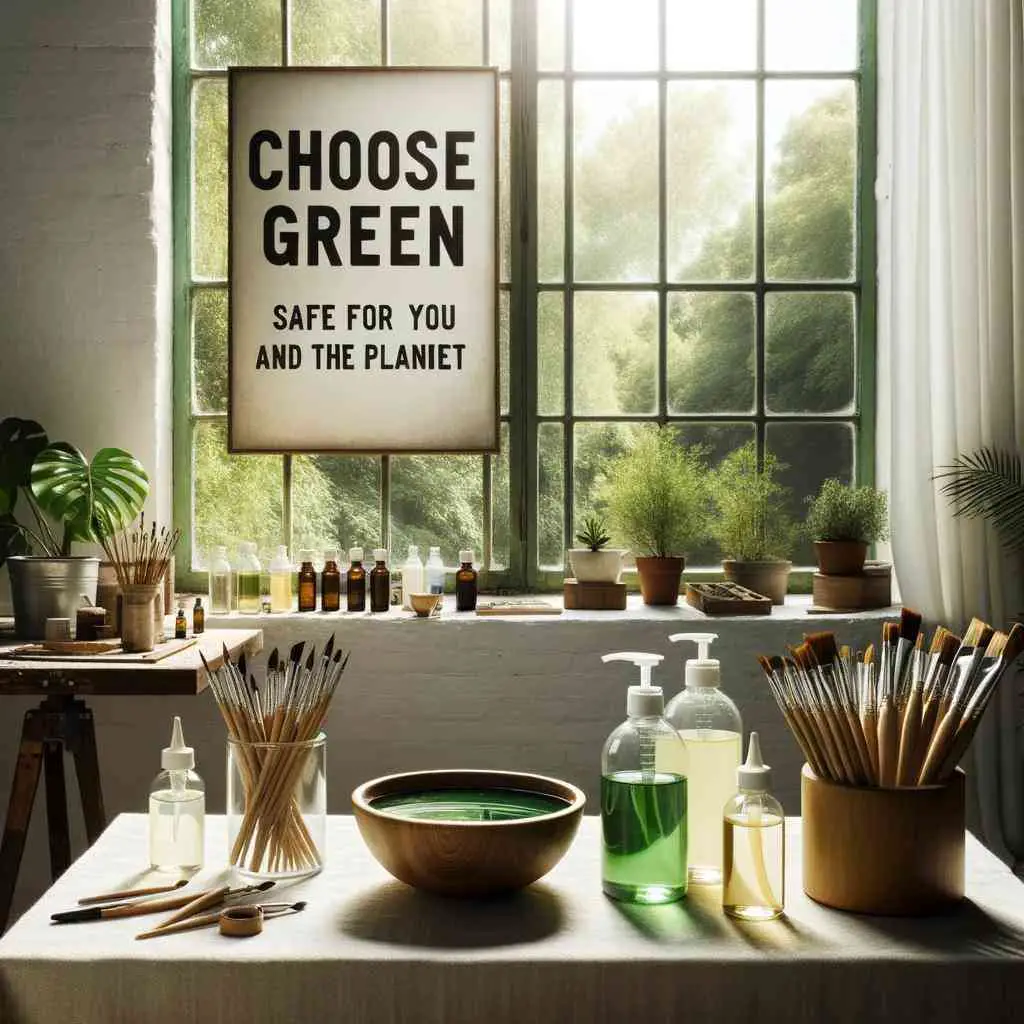Welcome to our comprehensive guide on how to clean oil paint brushes effectively. Keeping your brushes in tip-top condition is essential for any artist, whether you’re a beginner or a seasoned pro. In this article, we’ll walk you through the process step by step, drawing from personal experience and expertise to help you achieve the best results.
| Key Points |
|---|
| Proper brush cleaning is essential for artists. |
| Gather the right supplies and work safely. |
| Follow a step-by-step cleaning process. |
| Invest in quality brushes for longevity. |
| Consistency in cleaning maintains brushes. |
2. Gathering Your Supplies
Before we dive into the cleaning process, let’s make sure you have all the necessary supplies on hand. Here’s what you’ll need:
| Supplies | Description |
| Oil Paint Brushes | Your used brushes |
| Paper Towels or Rags | For wiping excess paint |
| Solvent (Turpentine or Odorless Mineral Spirits) | To clean the brushes |
| Glass or Metal Container | For soaking brushes |
| Mild Soap | For final cleaning and conditioning |
| Brush Shaper or Cardboard | To reshape the brush tips |
| Protective Gloves | To protect your hands from solvents |
3. Preparing Your Workspace
Creating the right environment for brush cleaning is crucial. Ensure good ventilation, work in a well-lit area, and lay down newspaper or a drop cloth to catch any drips or spills. Safety and cleanliness should always be a top priority.
Cleaning your paintbrushes is crucial to maintaining their longevity and performance. Learn how to do it properly in our step-by-step guide on UnifiedCrafts.
4. Cleaning Oil Paint Brushes Step-by-Step

4.1. Removing Excess Paint
Before diving into the cleaning process, gently wipe off any excess paint from your brushes using paper towels or rags. This step makes the cleaning process more efficient.
4.2. Choosing the Right Solvent
cting the correct solvent is vital for effective cleaning. Turpentine or odorless mineral spirits are commonly used. Be sure to follow safety precautions and use them in a well-ventilated area.
When it comes to artistic tools, like paintbrushes, maintenance matters. Discover tips for using non-toxic paints safely in your creative endeavors.
4.3. Soaking the Brushes
Place your brushes in a glass or metal container filled with the chosen solvent. Let them soak for a few minutes, allowing the solvent to dissolve the paint.
4.4. Cleaning the Bristles
After soaking, gently swish the brushes in the solvent to remove the remaining paint. Use a brush cleaning tool if needed, but be careful not to damage the bristles.
4.5. Rinsing and Repeat
After cleaning, rinse the brushes thoroughly with water. If the solvent is still coming out tinted with paint, repeat the process until the brushes are clean.
| Product | Brand | Description |
| Turpenoid Natural | Martin F. Weber | Odorless, non-toxic, and safe for brush cleaning |
| Gamsol Odorless Mineral Spirits | Gamblin | Highly refined and odorless mineral spirits |
| The Masters Brush Cleaner | General Pencil | A solid brush cleaner and preserver |
| Speedball Art Products Mona Lisa Pink Soap | Speedball | Pink soap for gentle yet effective cleaning |
5. Drying and Shaping Your Brushes

Once your brushes are clean, it’s time to dry and reshape them. Follow these steps:
- Gently squeeze out excess water from the bristles.
- Use a brush shaper or a piece of cardboard to reshape the bristles to their original form.
- Lay the brushes flat to air dry. Avoid standing them upright, as water can seep into the ferrule and damage the brush.
Art supplies require care, just like sewing machines. If you encounter issues, our jammed sewing machine guide provides a step-by-step solution.
6. Maintaining Your Brushes
Proper maintenance is key to extending the life of your brushes. After each painting session, follow these quick tips:
- Wipe off excess paint with a paper towel.
- Store brushes horizontally to prevent damage to bristles.
- Avoid leaving brushes in water or solvent for extended periods.
7. Troubleshooting Common Issues
7.1. Hardened Paint
If you have brushes with dried or hardened paint, try the following:
- Soak the brushes longer in the solvent.
- Use a brush cleaning tool or a toothbrush to gently scrub away the hardened paint.
7.2. Stubborn Stains
For stubborn stains on your brushes:
- Soak the brushes in a mixture of solvent and mild soap.
- Gently massage the bristles to loosen the stains.
8. Expert Tips and Techniques
Drawing from years of experience, here are some expert tips to make brush cleaning a breeze:
- Use separate brushes for different color families: Avoid color contamination by dedicating specific brushes to certain color groups.
- Clean brushes immediately after use: The longer you wait, the harder it becomes to remove dried paint.
- Invest in high-quality brushes: Quality brushes are easier to clean and maintain.
- Use a brush conditioner: Periodically use a brush conditioner to keep bristles soft and supple.
9. Safety Precautions
When working with solvents, safety is paramount. Remember to:
- Work in a well-ventilated area.
- Wear protective gloves.
- Dispose of used solvents properly.
10. Proper Storage
Storing your brushes correctly can prevent damage and extend their lifespan:
- Keep brushes horizontal or hang them with the bristles down.
- Avoid overcrowding brushes in storage containers.
Achieving the right colors in your artwork is essential. Explore our guide on mixing colors correctly for a harmonious palette.
11. Eco-Friendly Cleaning Alternatives

If you prefer eco-friendly options, consider using vegetable oil or an eco-friendly brush cleaner as a solvent alternative. These options are safer for the environment and your health.
Stay tuned for our Q&A section, where we’ll answer your most pressing questions on brush cleaning.
13. Recommended Brush Cleaning Products
Cleaning your oil paint brushes effectively requires the right products. Here’s a list of some top-rated brush cleaning products to consider:
| Product | Brand | Description |
| Turpenoid Natural | Martin F. Weber | Odorless, non-toxic, and safe for brush cleaning |
| Gamsol Odorless Mineral Spirits | Gamblin | Highly refined and odorless mineral spirits |
| The Masters Brush Cleaner | General Pencil | A solid brush cleaner and preserver |
| Speedball Art Products Mona Lisa Pink Soap | Speedball | Pink soap for gentle yet effective cleaning |
These products are trusted by artists worldwide for their effectiveness in cleaning and preserving brushes. You can choose the one that best suits your preferences and needs.
14. Personal Experience: Brush Cleaning Challenges
As a seasoned artist, I’ve encountered my fair share of brush cleaning challenges. One of the most common issues is procrastination. It’s easy to leave your brushes unwashed after a long painting session, but this can lead to paint drying and hardening on the bristles, making them challenging to clean.
Another challenge is using the wrong solvent. It’s crucial to select the appropriate solvent for your oil paints, as using the wrong one can damage your brushes and compromise the cleaning process.
Over time, I’ve learned that investing in high-quality brushes is a game-changer. Quality brushes are not only a joy to paint with but also easier to clean and maintain. They can withstand repeated cleaning without losing their shape or bristle quality.
Lastly, maintaining a consistent cleaning routine is essential. By incorporating brush cleaning into my artistic process, I’ve managed to keep my brushes in excellent condition for years.
Choosing the right paper is vital for watercolor painting. Learn about different paper types to enhance your artistic endeavors and brush care.
15. Conclusion
In conclusion, knowing how to clean oil paint brushes is a fundamental skill for any artist. By following the steps outlined in this guide and incorporating expert tips, you can ensure that your brushes remain in optimal condition, allowing you to create beautiful artwork consistently.
Remember to gather the necessary supplies, create a suitable workspace, and follow a step-by-step cleaning process. Don’t forget to invest in quality brushes and take proper safety precautions when working with solvents.
With the right approach and a little practice, you can keep your oil paint brushes clean, functional, and ready to bring your artistic visions to life. Happy painting!
Further Reading
Here are some additional resources to expand your knowledge on cleaning oil paint brushes:
“The Quick & Easy Home DIY Manual” A comprehensive DIY manual that includes tips on cleaning oil paint brushes. Explore this book for a more in-depth guide.
“How to Clean Oil Paint Brushes” Cowling & Wilcox’s blog post provides insights and techniques for cleaning oil paint brushes, complementing the information in this guide.
“How to Clean Oil Paint Brushes” Draw Paint Academy offers valuable tips and methods for cleaning oil paint brushes, enhancing your brush maintenance skills.
FAQs
How often should I clean my oil paint brushes?
It’s advisable to clean your oil paint brushes immediately after each painting session to prevent paint from drying on the bristles.
Can I use regular soap and water to clean oil paint brushes?
While regular soap and water can clean some of the paint, it may not be sufficient for oil paint. It’s recommended to use a solvent like turpentine or odorless mineral spirits.
What should I do if my brushes have hardened paint on them?
Soak the brushes in the chosen solvent for a longer duration and gently scrub them with a brush cleaning tool or a toothbrush to remove hardened paint.
Is it necessary to use a brush conditioner?
Using a brush conditioner periodically can help keep your bristles soft and supple, prolonging the life of your brushes. It’s a good practice but not mandatory.
Can I store my brushes upright in a jar?
It’s best to avoid storing brushes upright in a jar, as water or solvent can seep into the ferrule and damage the brush. Store them horizontally or hang them with the bristles down for better maintenance.

Hellen James is the creator of Unified Crafts and has been crafting since she was a kid accompanied by her mom to the craft store, where she was free to choose whatever ignited her imagination.

